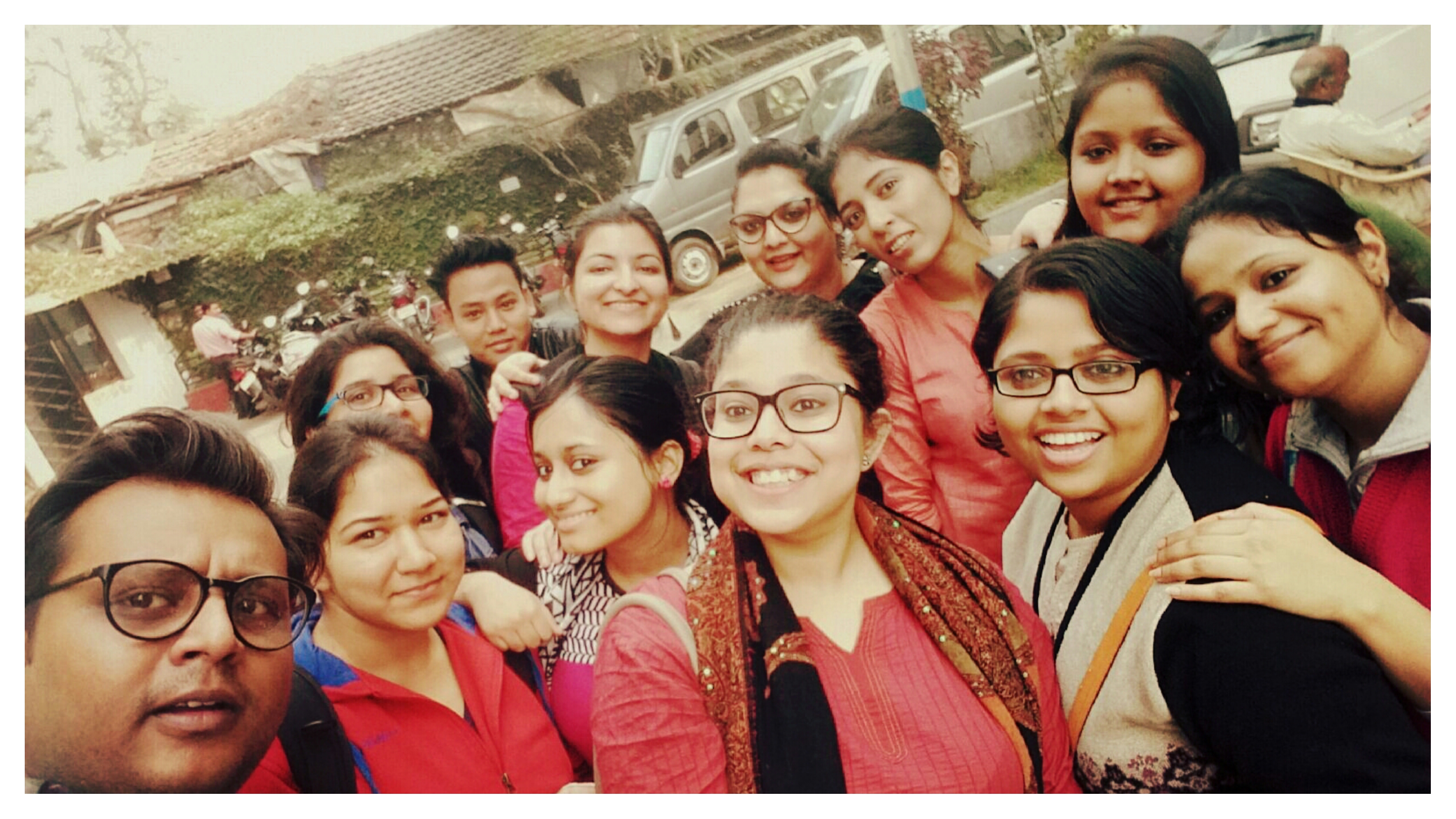Visit to the Printing Press
Posted on Feb 29, 2016
Some people find time to read a book in between the many chores of routine lives. Others live their routine lives in between reading one book or another. I would certainly fall in the latter category. Ever since my parents handed me my first comic book in my early years, I have never looked back. It is the best gift they could’ve ever given me—the gift of reading. As a reader, I may be alone at times, but I am never lonely. Coming to Kolkata to do the Book Editing course at the Seagull School of Publishing was just another way of being closer to books. The process of making a book has always intrigued me. How an idea in the author’s head transforms into a story, gets printed as a book and is finally published to reach us is a long, winding process. So when we were told about the upcoming printing press visit, I was sufficiently excited to give any kid going to Disneyland a run for his/her money!
When the day finally dawned, we were introduced to our Pied Piper (guide) for the day—Ronnie Gupta. Ronnie happens to be the printer and production manager for Seagull Books. We were first given some insights into the basic terms related to printing; what goes into deciding the book size, paper quality, binding and colour schemes and so on. Before we could bury him under all the questions, he laughingly told us to hold our questions till we actually get to the printing press. Wise man!
So off we went to the printing facility—a big cavernous building—of CDC Printers in Kolkata. The first thing that hits you when you enter the press is the smell of paper, the one that you sniff between the pages of your favourite book. It’s the sweetest fragrance for a bookworm. If only someone could bottle this smell, I reckon they’ll be selling millions! Ronnie led us through a labyrinth of stacks after stacks of papers to the plate developing room. It’s a climate controlled room where they keep the humongous machines that develop the imprints and etch them on aluminium sheets. It was an abracadabra kind of moment for us as we watched wide-eyed. The machine guzzles up plain sheets, chews on them (figuratively speaking) and throws out the etched plate in minutes. These plates are forwarded to the printing room where they wrap around cylinders and print paper at the speed of light it seems.
[gallery ids="1098,1099,1101" type="columns"]
Ronnie then herded us to another level where we saw the cutting/trimming process. As we watched, a worker aligned thousands of stacked sheets under the blade and at the press of a button the blade went through them like knife in butter. It’s almost brutally beautiful to watch and each and every one of us shuddered! Next we saw the lamination, binding, folding, glueing, stitching and packaging processes. Finally we were led into the room where this beast of a machine waited for us. It was a mammoth, four-colour printing machine and could print thousands of pages before you can finish your cup of cappuccino. We were allowed to climb on this machine as we watched the four rollers, drenched in the colours—cyan, magenta, yellow and black—the CMYK colours that can give you almost any colour under the spectrum. There was also an amazing console that lets you adjust the colour saturation to achieve the desired result. For some reason, I kept on thinking that once I pass on to the afterlife, this would be a nice place to haunt; this or the Amazon warehouse!
[gallery ids="1100,1102" type="rectangular"]
Having gone through most of the processes that make a book, we all regrouped outside. Ronnie gave us some amazing words of wisdom, stemming from his experience in this business for more than three decades. It’s a tenuous task, the printing business. No amount of digital innovation can take away the human touch that is still required to print books. It’s largely a labour of love. Never again will I look at a book, no matter how good or bad, and treat it dismissively.
When I asked Ronnie what his takeaway was after more than 35 years in the printing business, his answer was simple, ‘You have to love publishing to do it for as long as I have.’ You know you’re in the right profession when what you do is not a choice, but a need; when earning is irrelevant and glory is inconsequential, when what you do is just an extension of who you are as a person.
This course is showing me a new way of looking at things that usually go unnoticed and I cannot wait for what unfolds in the coming months.

Anumeha Gokhale
Leave a comment ×